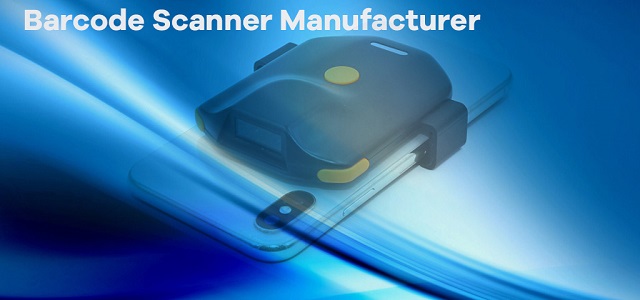 English
English-
 Español
Español
-
 Português
Português
-
 Portugiesisch
Portugiesisch
-
 Français
Français
-
 日本語
日本語
-
 Български
Български
-
 한국어
한국어
-
 Türkçe
Türkçe
-
 Nederlands
Nederlands
-
 English
English
-
 Eesti
Eesti
-
 Suomi
Suomi
-
 বাঙ্গালি
বাঙ্গালি
-
 беларуская
беларуская
-
 Ελληνικά
Ελληνικά
-
 Kreyòl ayisyen
Kreyòl ayisyen
-
 עִברִית
עִברִית
-
 हिन्दी
हिन्दी
-
 Magyar
Magyar
-
 íslenskur
íslenskur
-
 Gaeilge
Gaeilge
-
 italiano
italiano
-
 Hrvatski
Hrvatski
-
 Latinus
Latinus
-
 latviski
latviski
-
 Melayu
Melayu
-
 Malti
Malti
-
 Монгол
Монгол
-
 မြန်မာ
မြန်မာ
-
 فارسی
فارسی
-
 Polski
Polski
-
 عربي
عربي
-
 Română
Română
-
 русский
русский
-
 slovenský
slovenský
-
 Slovenščina
Slovenščina
-
 Afrikaans
Afrikaans
-
 svenska
svenska
-
 dansk
dansk
-
 український
український
-
 o'zbek
o'zbek
-
 Cymraeg
Cymraeg
-
Zulu
-
 Tiếng Việt
Tiếng Việt
-
 bosanski
bosanski
-
 Deutsch
Deutsch
-
 eesti keel
eesti keel
-
 ไทย
ไทย
קוד ה-QR נסרק מדי יום. האם אתה מכיר את העיקרון הטכני שלו? קוד ה-QR נסרק מדי יום. האם אתה מכיר את העיקרון הטכני שלו?
Thu Jul 21 11:43:32 CST 2022
קוד ה-QR נסרק מדי יום. האם אתה מכיר את העיקרון הטכני שלו? קוד ה-QR נסרק מדי יום. האם אתה מכיר את העיקרון הטכני שלו?
Introduction

QR קוד הפך לחלק הכרחי מחיי היומיום שלנו. אתה צריך לסרוק את קוד ה-QR בעת הכניסה, בעת התשלום עבור דברים, ובעת הכניסה לפגישות. מה העיקרון מאחורי טכנולוגיית קוד QR כל כך בשימוש? מאמר זה ינתח את העקרונות הטכניים מאחורי קוד QR בהתבסס על הפיתוח שלו ותרחישי היישום האופייניים. טכנולוגיית קוד, בואו נסתכל בקצרה כיצד היא התפתחה. כבר ב-1948, ברנרד סלבו היה סטודנט לתואר שני במכון פילדלפיה לטכנולוגיית גז. במקרה, הוא נודע כי הבעלים של סופרמרקט מקומי רצה שהדיקן יעזור לתכנן מכשיר שיוכל לסרוק את מחירי הסחורות כדי לשפר את היעילות של מכירת הסחורות בסופר. מכיוון שהקופאי בסופר צריך להיכנס ידנית למבנה בכל פעם בעת הסדרת הסחורה, יעילות ההתחשבנות של הקופאית נמוכה מאוד כאשר תזרים הנוסעים בשעות נוספות מגיע. אבל הדיקן חשב שזה דבר מאוד קשה לעשות.
עם זאת, ברנרד סלבר וחברו ג'וזף יער חשבו שזו הזדמנות עסקית ענקית והחליטו לעצב מוצר בר-קיימא מבחינה מסחרית. לאחר שניסית את התוכנית של זוהר גרפיט אולטרה סגול, מערכת נקודה עיוורת ומערכת סמלים של קווים, הם לא היו בשימוש נרחב עקב המגבלות הטכניות באותה תקופה. לעלות את רעיון הזהב שלא זכה ליישום מסחרי באותן שנים. בשלב זה, הוא כבר היה מהנדס של יבמ. במהלך שהותו בחברה, הוא הביע ללא הרף את רעיונותיו על יישום טכני של ברקוד, ועמיתיו הדגישו ללא הרף את הערך המסחרי של הברקוד. במקביל, הופעלו לייזרים ומחשבים והושלם הבסיס הטכני של הטמעת ברקוד. בערך בשנת 1969, יער השתתף בצוות מחקר סורקים ותוויות בסופרמרקט שהושקע על ידי יבמ, שבראשה עמד ג'ורג' לורל. לאחר מספר שנים של מחקר קפדני, IBM השיקה סוף סוף ברקוד שניתן לזהות.
ב-26 ביוני 1974, סורק הברקוד הראשון בעולם הותקן בסופרמרקט מארש בטרויה, אוהיו. הפריט הראשון שנסרק היה 10 חבילות של מסטיק בטעם פירות עסיסי של ריגלי, שנאסף כעת על ידי המוזיאון האמריקאי להיסטוריה. לאחר מכן, ברקוד נמצא בשימוש נרחב בסחורות, ספרים, דואר ומערכות אחרות, מה שמשפר מאוד את היעילות של הפעילות העסקית.
Before we understand the principle of two-dimensional code technology, let's take a brief look at how it developed. As early as 1948, Bernard salvo was a graduate student at the Philadelphia Institute of gas technology. By chance, he learned that the owner of a local supermarket wanted the dean to help design a device that could scan commodity prices to improve the efficiency of commodity sales in the supermarket. Because the cashier in the supermarket needs to enter the structure manually every time when settling the goods, the cashier's settlement efficiency is very low when the overtime passenger flow reaches. But the Dean thought it was a very difficult thing to do.
However, Bernard selver and his friend Joseph woodland thought it was a huge business opportunity and decided to design a commercially viable product. After trying the scheme of ultraviolet irradiation graphite luminescence, blind spot system and dot line symbol system, they were not widely used due to the technical limitations at that time.
In the blink of an eye, in the 1960s, woodland never gave up the golden idea that did not realize commercial application in those years. At this time, he was already an engineer of IBM. During his stay in the company, he constantly expounded his ideas on the technical implementation of bar code, and his colleagues constantly emphasized the commercial value of bar code. At the same time, lasers and computers have been applied, and the technical foundation of bar code implementation has been completed. About 1969, woodland participated in the supermarket scanner and label research project team invested by IBM, which was headed by George laurel. After several years of painstaking research, IBM finally launched a recognizable bar code.
On June 26th, 1974, the world's first barcode scanner was installed in marsh supermarket in Troy, Ohio. The first item scanned was 10 packs of Wrigley's juicy fruit flavored gum, which has now been collected by the American Museum of history. Then, barcode is widely used in commodities, books, postal and other systems, which greatly improves the efficiency of business operation.

